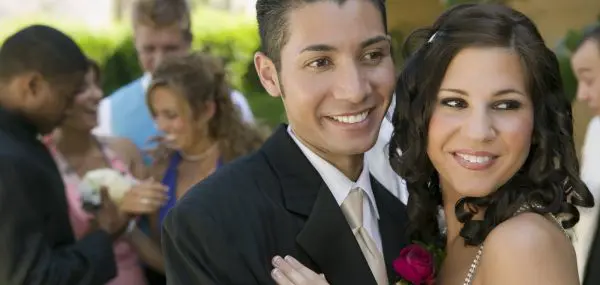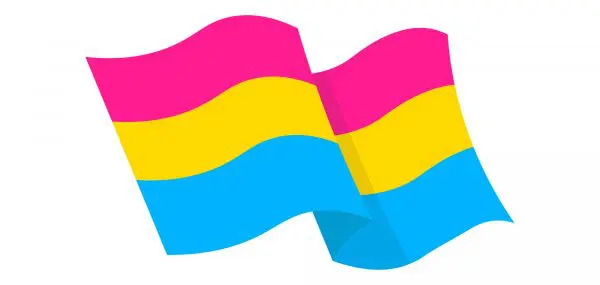My daughter watched online pornography when she was just 12 years old. She and her friend were curious about some of the terms they’d been learning in health class. They went to Google—and well, you can guess what happened next.
I was shocked when my daughter told me what she’d seen. I knew online pornography existed, of course, but until then I didn’t really get just how easy it was for my daughter to access it.
Over the years, I’ve heard similar stories from many parents and worries about the dangers of porn. In fact, a 2008 study by researchers at the University of New Hampshire, published in the journal CyberPsychology and Behavior, found that more than 90% of boys and 60% of girls were exposed to pornography before the age of 18. And that was in 2008, before most adolescents had a smartphone in their pocket.
So, what’s a parent to do? For starters, younger adolescents should be prevented from accessing pornography as much as possible. You can help by adding a filter that blocks explicit content to your home Wi-Fi network (google parental controls).
“Rather than frame it as, ‘I don’t want you to watch porn,’ it should be, ‘Here’s what you need to know,’” explains Elizabeth Schroeder, EdD, MSW, a sexuality educator and co-founding editor of American Journal of Sexuality Education. “It’s making them an educated consumer. ‘I don’t think you should be watching porn, and here are the reasons.’”
What younger adolescents should know is that explicit content is not appropriate (or healthy) at this age, that it is for grown ups only, and that your adolescent’s responsible use of his device does not include accessing such material.
“A child in middle school is a concrete thinker,” says Schroeder. “Adults can look at it and see it as a fantasy, but kids don’t know that. They see body parts. Huge penises. Ridiculously huge breasts, and so what they are getting from pornography is information versus understanding it as a fantasy.”
As teenagers get older—and more sexually mature—the conversations must be different, however. It’s not that all teenagers will watch pornography, but as the UNH study suggests, many do. They may search for it out out of curiosity; they may feel pressured by peers to watch it; or they may enjoy it. And like having sex, there’s not a lot you can do to prevent it if your older teenager is determined.
Experts say parents should focus on preparing teenagers to have healthy sexual lives—and relationships—in a world that includes easy access to pornography.
3 Ways to Talk to Our Children About Porn:
1. Don’t Let Pornography Teach your Teen About Sex.
Few parents relish the idea of talking about sex with their teenager. But if you don’t do it, someone or something else will. And for boys in particular, there’s a good chance the something will be pornography. “A lot of boys say they started watching porn because they wanted to learn about sex,” explains Andrew Smiler, Ph.D., a psychologist and author of Dating & Sex: A Guide for the 21st Century Teen Boy.
In general, boys are more likely to seek out pornography than girls. The UNH study found that 42 percent of the girls who had seen pornography had not sought it out, while only 6.2 percent of boys who’d watched pornography had done so inadvertently. Still, this is an important conversation for both genders.
And if you want your teenager to learn your values, then you need to be talking about sex well before your teenager discovers pornography, say both Smiler and Schroeder.
It can be helpful to think about these conversations broadly as: What do I want to teach my child about being in a relationship? Sex is a part of that, but not all of it. What you talk about depends on your child’s age, explains Smiler. Early on, it may be more, “What does it mean to be someone’s boyfriend or girlfriend? What are the expectations?” he explains. “This then becomes some of the groundwork for later conversations.” Those later conversations should include specifics about sex, like the fundamentals of safe sex, but also what it means to be in a healthy, consensual sexual relationship (which is not what your adolescent will learn from pornography).
2. Educate Your Teen about the Dangers of Porn.
Parents who have ongoing, wide-ranging conversations about sex will have an easier time talking about pornography. And you should be talking about the dangers of porn by middle school, which is when many adolescents will first encounter it. Have you seen it? Do your friends watch it? Why do they watch it?
The goal is not to shame, but rather to talk about what pornography is and why you don’t believe your teenager should watch it.
Again, simply telling a teenager, especially an older teenager, not to watch pornography doesn’t work. “It disempowers,” says Schroeder. “And whenever you tell a kid not to do something, that’s what they want to do.”
There are many reasons for not watching pornography that parents can talk about with teenagers. Chief among them: It gives all the wrong ideas about sex.
Says Smiler: “The problem with pornography is that the story lines, if you will, and the set of bodies that show up on screen are pretty narrow. All the guys are well cut. All the women have a particular body shape. No one has body hair.”
There is also little-to-no verbal consent in pornography; much of it is demeaning to women (and it can also be violent and disturbing); everyone is always “in the mood”; and it’s mostly a straight, male perspective on sex. “It’s this one narrow version of sexuality and how it is supposed to look,” says Smiler. In other words, if pornography is how your adolescent is learning about sex, it’s not a great basis for developing a mutually pleasurable sex life with a partner. Porn is unrealistic.
The jury is still out on other dangers of pornography, like whether viewing pornography during adolescence causes long-term issues. Studies that expose minors to pornography would be unethical, explains Schroeder, so it may be some time before we know what this generation’s easy access to pornography means (versus the old days, when dad’s Playboy or your parent’s Joy of Sex was about as racy as it got).
“Boys who are watching a lot of porn and have very little direct experience of their own learn that sex should look this one particular way,” says Smiler. “Then at some point when they have a partner, they have a script in their head that may not match the reality they are trying to experience.”
Smiler recommends parents talk about these kind of specific downsides of pornography with older teenagers. “You might also ask, ‘Are you going to be disappointed by your partner’s actual body?’ We know that the idealized form you see in pornography is a minority of the bodies out there.”
3. Stay Calm (and Don’t Shame).
So, you’ve discovered your teenager—or tween—has watched pornography. Perhaps you’ve even walked in on your teenager in the midst of watching it.
“As best you can, do not freak out, or at least do not freak out in front of your child,” says Smiler. “If this is something that he has been doing and enjoys and you freak out in front of him, you are losing some cred. ‘Mom or dad freaked out the way I always knew they were going to, and now I am going to have to sit here and endure this conversation.’”
Schroeder agrees: “You want to remain calm. Kids are in tune to how we say things before they are in tune to the words.”
Instead, if you’ve walked in on it, ask your teenager to turn off the computer. “Say, ‘We will talk about this in half an hour.’ Go and get yourself collected,” says Smiler. If you’ve discovered it on the computer or phone, then say you want to talk about what you found.
“It’s going to be a hard conversation at that point,” says Smiler. “You might just start by asking why they are looking at pornography and what they like about it.” Then calmly explain your concerns.
Last, but hardly least: Try to keep the conversation about healthy sexuality going (even if it’s “just listen for 10 minutes while I tell you this”), says Schroeder. It will become easier and less embarrassing (well, maybe). And even if it seems like your teenager isn’t listening, he is.




